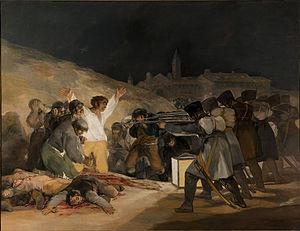____ Is the Destruction of Sacred Images.
The destruction or damaging of these images is called. The Philistines carried probably on sacred carts their images or gods commonly regarded as identical into battle expecting victory by their aid.

Art Appreciation Review Ch 1 15 Flashcards Quizlet
Dr Mary Beal 1100 315 Tea Coffee from 1130am Please bring a.

. On the left is a temple on the ancient Mayan archaeological site Xunantunich in 2012. The Destruction of Images. Images act as connections.
Naturally it doesnt come to mind that the first Christians were forced to hide their faith and to lead their worshipping in secret places where at most they could use secret symbols incomprehensible to their enemies. The destroyers of images were known as iconoclasts. But so sudden was their defeat and so hasty their flight that they were compelled to leave them behind and David and his men took them.
All things exist in God and lead up to Him. Experts say the destruction of the Indigenous sacred site demonstrates that. Before and after photographs show part of the Juukan Gorge rock shelters that were blasted by Rio Tinto in May 2020.
Iconoclasm is defined as the deliberate destruction of icons like the sacred images representing Christ Saints Christs Baptism and Crucifixion. Exploring Icons of the Orthodox Church. It is very hard for moderns to think in immaterial terms.
A study day looking at the power of certain sacred images to survive periods of crisis persecution and destruction throughout the centuries. 2 Samuel 521. Extended to images.
Plans for the destruction of the caves one of which contains evidence of human habitation dating back some 45000 years had been long in their. The destruction of these icons or any other sacred image became known as iconoclasm and was condemned by the Holy Father in Rome. Another important issue of tension was the role of images in worship.
Now through the destruction of cherished objects and buildings insurgents like ISIS can demonstrate their power over the. εἰκών eikṓn figure icon κλάω kláō to break is the social belief in the importance of the destruction of icons and other images or monuments most frequently for religious or political reasons. ---the Greeks were the first to conceive of any idea of iconoclasm- Plato has two innovations.
The sacred site dated back at least 2300 years and was among the most important sites in northern Belize according to the Belize Institute of Archaeology. Naturally it doesnt come to mind that the first Christians were forced to hide their faith and to lead their worshipping in secret places where at most they could use secret symbols incomprehensible to their enemies. The Church of England was torn asunder over disputes concerning polity the meaning of the Eucharist and liturgy.
He in turn could look back to the Old Testament for inspiration. Whereas light points to some material truth sacred images and statues point to immaterial truths. The destruction of religious or sacred images.
People who engage in or support iconoclasm are called iconoclasts a term that has come to be figuratively applied to any individual who challenges. On 24 May the multi-national mining company Rio Tinto seeking to expand its iron ore mine in the Western Pilbara of Western Australia blasted two ancient and sacred Aboriginal cave sections of the Juukan Gorge. This holds the notion of a hierarchy.
Namely a denial of. White supremacist mentality that is at the root of the destruction of the Amazon and its native peoples. Originally iconoclasm referred to the destruction of actual icons as major religious leaders and their followers sought to ban the veneration of sacred images images representing Christian saints the Virgin Mary and Christ during Byzantine and Protestant Reformation eras.
Iconoclasm and the destruction of art. Secondly that we even think it plausible to represent the divine in anyway. The Catholic Church has always used sacred images and statues for the practice of worship.
Besancon on Platos analysis of iconoclasm. Iconoclasm is the destruction of sacred images or representations. The Protestant Reformation spurred a revival of iconoclasm or the destruction of images as idolatrous.
Desecration of sacred images demands bolder action from Vatican. Later in 787 the Second Council of Nicea defending the use of sacred images declared For the more frequently one contemplates these pictorial representations the more gladly will he be led to remember the. Destruction of images sacred to other religions throughout the Arabian peninsula9.
The Catholic Church has always used sacred images and statues for the practice of worship. While other motives may appear to be the reason for todays destruction of sacred imagery we need only look back in church history to see such action has a deeper objective. In Byzantium the period from 726 to 843 when there was an imperial ban on such images.
Veneration of sacred images. The destruction of images objects and sacred buildings has a long history that has certainly shaped Britains cultural landscape but its intended audience has dramatically grown thanks most recently to social media. Iconoclasm in Christianity majorly took place.
Those who opposed such ban were known as iconophiles. Icons are sacred or holy images particularly venerated by the Eastern Rite churches and to a smaller extent by the Roman Catholic Church. Wednesday 27th February Speaker.
Rio Tintos former CEO got a huge payout last year despite being forced to resign over the companys destruction of a sacred Indigenous site in Australia. By contrast the Nohmul pyramid is now little more than a pile of stones. Firstly that we should think about the divine at all worth reflecting on.
Veneration of sacred images.
Mining Esl Lesson Plan Breaking News English Lesson
Comments
Post a Comment